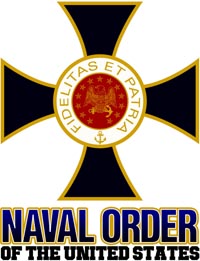News & Tall Tales. 1800s.

San Francisco Bay
June 26, 1847, Californian
Indian Tradition of the Bay of San Francisco.
Mr. Editor: I have frequently heard, since my arrival in California, that there was an Indian tradition, which was universally received among the Indians here, that, at no great length of time past, the Bay of San Francisco was an inland sea of fresh water; that there was but a very narrow drain, an outlet and that was at the point where the Paberas river now empties into the Bay of Monterey.

I have recently conversed with a very intelligent gentleman, who, with one of the Missionary Priests, visited several of the Indian Villages in the neighborhood of Sonoma, which is now on the North side of the Bay, they found several, sensible old Indians who confirmed the tradition; one of them, said he had learned from his father, that his grandfather, had been in the habit of attending the annual feasts at Monterey, and that they travelled by land, having nothing more than small Mountain streams to pass, which they could easily wade.
That the place which is now the entrance to the Bay, was then a Mountain, but not more than about one league wide, and that during the time of the grandfather of the chief who gave my informant the information, there came an earthquake, which rent the Mountain asunder, and opened the present passage of the Bay to the Pacific.
If the above tradition is true, the lower arm of this great inland sea must have been about seventy-five miles long and about twenty-five, wide, including the Bay of San Pablo, and if the Straits of Carquinez was then open, it formed a narrow connexion between this arm, and the sea which must have covered the great Tulary Plains. The extent of the interior, or Tulary Sea must have been about six hundred miles long and about fifty miles, wide extending along the foot of the California mountain nearly North and South. There can be no doubt of the fact, that what is now the great Tulary Lake was once a part of this great sea of waters.
Kings River, a navigable stream, rises in the California mountain and empties into the lake, there are also, a number of smaller streams which discharge their waters into the lake, and yet there is no outlet from the lake. There is however a low flat plain between this lake and the San Joaquin river and about fifteen miles out of the forty, which is the distance between them, there is a wide lagoon, or channel, and the other 25 miles, is a Tulary marsh, which, at very high water is overflown, and the waters from the lake passes into the San Joaquin river.
The whole face of the country give the strongest evidence of the truth of the tradition.

At the entrance of the Bay, the mountains rise very high on either side; The rocks steep and craggy; and bear marks every where, of having been once, generated by violent convulsions; the channel is very deep in the pass and in some places rocky bottom. There are several high pointed rocks which stand considerably separated from the main land, and near the mouth, there are several rock islands with good channels on either side.
The whole of the valleys of the Sacramento. San Joaquin and Santa Clara bear, every where, marks of having been recently covered with water, and from the shells and other deposits it is equally evident that it must have been fresh water, these facts make it more certain that the opening through, which the salt water passes, must be of recent duration.
There are many different kinds of sea shells, and salt water productions which are smaller than they are out side, and in every respect show that they have not been always here.
The trees in the valleys are young and are now rapidly increasing both in number and size.
In another number, I shall describe more minutely, the face of the country and the appearance, timber and minerals of the mountains, which may be of some service, both, to the agriculturalist and the mineralogist.
OBSERVER.

The Naval Order of the United States has a history dating from 1890. Membership includes a wide range of individuals, many with highly distinguished career paths.
The San Francisco Commandery meets the first Monday of each month at the San Francisco Italian Athletic Club in San Francisco, California and holds two formal dinners each year.

 Copyright ~ 1998-2018.
Copyright ~ 1998-2018. 